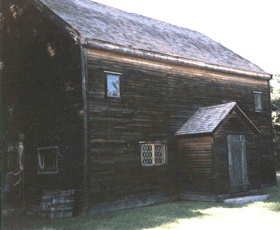Salem Witchcraft:
Explorations and Discoveries
Few events in American history are better known than the Salem witchcraft trials of 1692. Its popularity is doubtless attributable to a number of things: a persistent fascination with the occult; a perverse pleasure to expose the underbelly of an American culture that boasts of toleration, social harmony, and progress; and an appreciation for a compelling, dramatic narrative replete with heroes and villains. Skeptics, like the preeminent twentieth-century historian Perry Miller, question whether the Salem trials constituted anything more than an inconsequential episode in colonial history. But most historians consider Salem worthy of continuing investigation even if it was less than a major turning point in history. Indeed, Salem has been an unusually fertile field for historical research because it readily lends itself to new approaches, insights, and methodologies. To understand what happened in Salem, historians have profitably applied the perspectives of politics, anthropology, economic and social analysis, religion, social psychology, and demography. If the ultimate meaning of Salem is still elusive, these investigations have broadened and deepened our understanding of the 1692 witchcraft outbreak.
The Salem Witchcraft Site is not a historical narrative of Salem. Instead, it provides data about certain aspects of the outbreak and demonstrates how this data can be used to further our understanding of events. The website takes a "learn by doing," or "inquiry," approach to learning. It formulates questions, explores solutions, and encourages users to pursue further understanding on their own. It is as much about learning how to think about history, particularly in an analytic and quantitative way, as it is about Salem witchcraft itself. Therefore, although it generally demonstrates ways to analyze the Salem data, it also leaves other activities to be performed by users. Selectively or in its entirety, the site is intended for a wide audience: historians, whether as researchers or teachers; students of history and of the Salem witchcraft episode, whether in school or not; and non-historians, such as those who teach or are learning basic statistics or social science methodology. While the Salem Witchcraft Site can be used in different ways and for different purposes, it is hoped that all will come to appreciate the enriching experience of bringing to light the world of the past.
The Salem Witchcraft Site was developed in tandem with my own research on Salem, and its data sets and analysis have been shaped by my understanding of events in 1692. These ideas are more systematically explained in three published essays on Salem listed in the Bibliography. However, the availability of the data sets permits users to test and extend my analysis or to develop alternative interpretations. By continuing to rethink the past, it remains vital and alive.
Richard B. Latner
Tulane University
